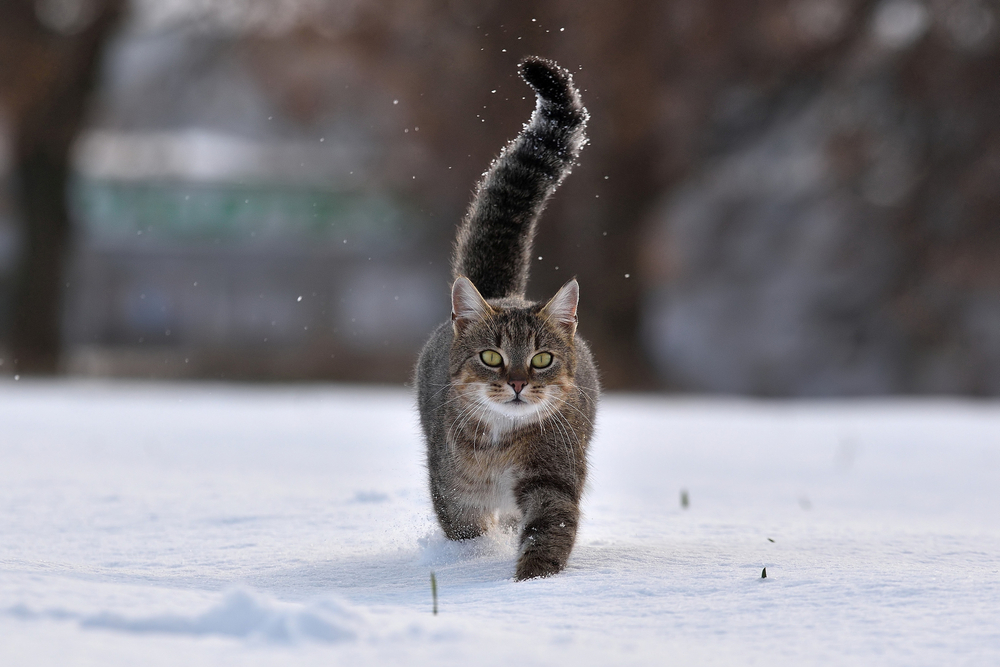New York winters can be brutal, and your pet requires special care and consideration to stay safe and healthy during the season’s cold temperatures, snow, and ice. Pets all respond differently to the cold, but our Stack Veterinary Hospital team wants to ensure your pet stays warm and comfortable—no matter their temperature preference. We’re sharing the truth about some common cold-weather safety myths to help you protect your pet from the elements.
Myth #1: My pet’s fur is enough to keep them warm
Although your pet’s fur coat does protect them when the temperature is low, if you overestimate your pet’s cold tolerance, you put them at risk of hypothermia. While fur does provide a natural insulation layer, it isn’t enough to keep your pet warm for extended periods in extreme weather. Arctic breeds, such as the Siberian husky, are generally equipped with cold-weather protection, but whether your pet has thick fur, any pet left outside in freezing temperatures can easily develop hypothermia, a serious medical condition that occurs when your pet’s body temperature drops to lower than 99 degrees. If your pet has a low tolerance for cold, consider dressing them in a warm winter jacket before heading outside, limiting their exposure time, and keeping them indoors as much as possible when temperatures are extremely low. When your pet is outside, monitor them for the following hypothermia signs:
- Shivering
- Lethargy
- Shallow or labored breathing
- Low heart rate
- Dilated pupils
- Pale or bluish skin
- Decreased appetite
If a hypothermic pet stays out in the cold, signs progress and can become life-threatening. Immediately wrap your pet in a warm blanket, and seek veterinary care if they exhibit any of these advanced hypothermia signs:
- No longer shivering
- Collapse
- Erratic, slow heart rate
- Slowed breathing
- Unresponsive or comatose
Myth #2: Pets can’t get frostbite
Like people, pets can develop frostbite in cold temperatures. Frostbite is tissue damage caused by extreme cold, and your pet is at risk when temperatures fall below zero. Pets’ frostbite signs include swelling and pain in the affected area, discolored (e.g., blue, grey) skin in the affected area, stiffness, and skin blisters or ulcerations. Frostbite most commonly affects a pet’s tail, nose, and ears, so protecting these extremities can minimize your pet’s risk.
Myth #3: I can safely leave my pet in the car for a quick errand
Vehicles have little insulation and do not protect pets from frigid temperatures. Pets left in cold cars can quickly succumb to hypothermia. Left unattended, your pet could get into trouble quickly, so leave them safe and warm at home when you run errands.
Myth #4: My pet’s paws are naturally winterized
While pet paws are thick and resilient and covered in insulating fatty tissue, they are still susceptible to injuries. Exposure to cold, dry air can lead to chapped, cracked paw pads. In addition, many ice melters contain toxic chemicals that can irritate your pet’s skin or harm their internal organs if they lick the poison from their paws. To protect your pet’s paw pads after walking on treated pavements, wipe their feet with a damp cloth to remove any accumulated salt, ice melt, or debris, and discourage your pet from licking or chewing their feet. If your pet has ice balls or snow packed between their toes or in their fur, use a hair dryer on low heat to accelerate the melting process. Protective footwear can protect your pet’s paw pads from harsh chemicals and prevent cold-weather injury, including dryness, cracking, or abrasions from rough ice patches.
Myth #5: My pet doesn’t need parasite prevention during the cold months

A common misconception is that parasites disappear when the temperatures drop, but fleas, ticks, and heartworms are a year-round threat. Most parasites don’t die but rather overwinter when temperatures drop, so they still pose a threat to your pet’s health. Administering parasite preventives year-round is the best and easiest way to ensure your pet has effective, uninterrupted protection.
Winter elements pose special hazards to your pet’s safety. Protect your pet’s health year-round through regular wellness exams with our Stack Veterinary Hospital team.







Leave A Comment